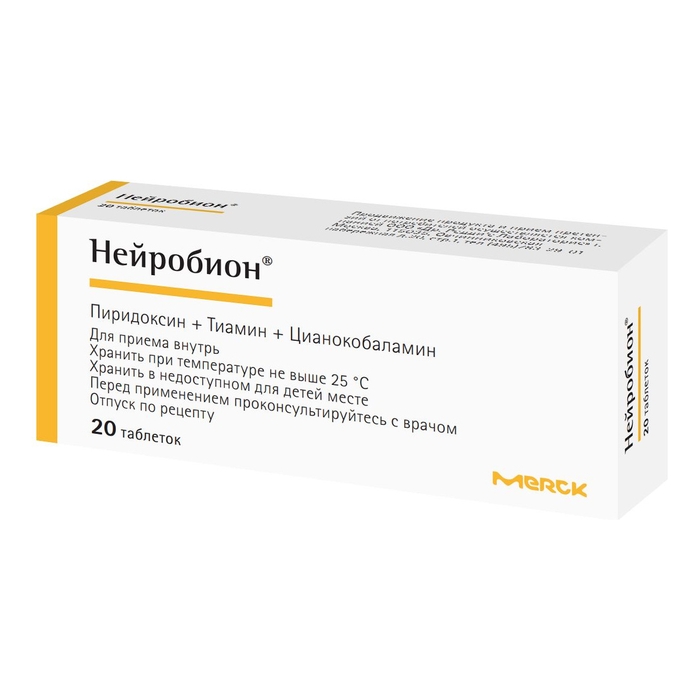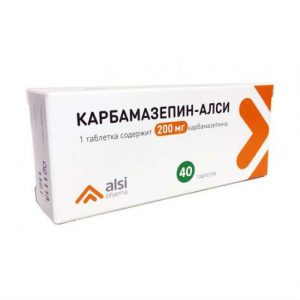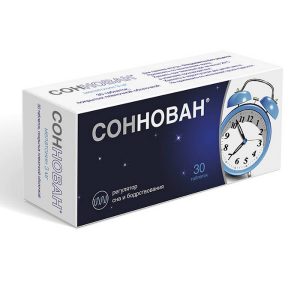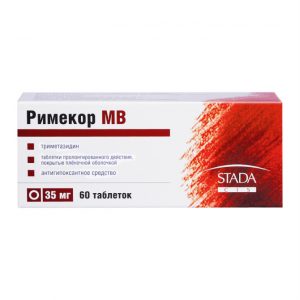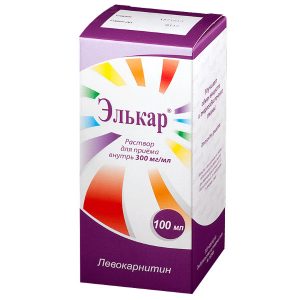Description
Description
Round biconvex tablets, coated with an almost white shell, shiny.
packaging 20 pcs
Pharmacological action of
Pharmacotherapeutic group of
Vitamins of group B
ATX code: A11DB
Pharmacological properties of
Pharmacodynamics
The drug contains a combination of neurotropic active substances of the complex of vitamins of group B. Vitamin B 6 (Vitamin B) 6 play a special role as coenzymes in the intermediate metabolism occurring in the central and peripheral nervous system.
Like other vitamins, they are indispensable food components that the body is not able to synthesize on its own. The therapeutic introduction of vitamins B1, B6 and B12 into the body compensates for the often insufficient intake of vitamins from food, which ensures the presence of the necessary amounts of coenzymes in the body.
The combined use of B vitamins increases their therapeutic effectiveness, since the effectiveness of the combination exceeds the effectiveness of the individual components.
The therapeutic use of these vitamins for various diseases of the nervous system is aimed at, on the one hand, to compensate for the existing deficiency (possibly due to the increased need of the body, due directly to the disease) and, on the other hand, to stimulate the natural mechanisms, aimed at recovery.
However, the indirect analgesic effect of the complex of B vitamins has a beneficial effect on the therapeutic result.
Pharmacokinetics
Thiamine
After ingestion, thiamine undergoes a dose-dependent transport, the mechanism of which is of a dual nature: active absorption at a concentration of up to 2 μmol / L and passive diffusion at concentrations above 2 μmol / L. Thiamine phosphorylation occurs in the liver. The half-life is about 4 hours. The human body contains about 30 mg of thiamine. Given the rapid metabolism, it is excreted after 4-10 days.
Pyridoxine
Pyridoxine is absorbed very quickly, mainly in the upper intestine, and is excreted after a maximum of 2-5 hours. Coenzyme function requires phosphorylation of pyridoxine. Pyridoxine in phosphorylated form (pyridoxalphosphate) is almost 80% bound to plasma proteins. The human body contains about 40-150 mg of pyridoxine. 1.7-3.6 mg is excreted per day by the kidneys.
Cyanocobalamin
Cyanocobalamin is absorbed from the gastrointestinal tract through 2 mechanisms:
– release under the influence of the gastric juice and fast binding to the intrinsic factor,
– passive diffusion through the intestinal epithelium regardless of intrinsic factor.
At doses above 1.5 mcg, the latter mechanism plays a significant role.
In patients with B12-deficient anemia, reabsorption after oral administration is approximately 1% of 100 mcg or more.
Excess cyanocobalamin is mainly accumulated in the liver.
From the liver, it is excreted with bile into the intestine and is largely reabsorbed during intestinal-hepatic circulation. The metabolic rate of cyanocobalamin per day is 2.5 mcg.
Indications of
In the complex treatment of the following neurological diseases: Neuritis and neuralgia:
trigeminal neuralgia,
neuritis of the facial nerve,
intercostal neuralgia,
pain syndrome caused by diseases of the spine, lumbor leukemic ulcer disease
Use during pregnancy and lactation
During pregnancy and during lactation, the use of the drug Neurobion ® is not recommended due to the high content of vitamins.
Vitamins B1, B6 and B12 are excreted in breast milk, however, the risk of overdose in the newborn is not established.
In some cases, taking high doses of vitamin B6 (> 600 mg per day) may inhibit the secretion of breast milk.
If you need to take the drug during lactation, breastfeeding should be discontinued.
Composition of
1 coated tablet contains:
Core:
Active ingredients:
Thiamine disulfide – 100.00 mg,
Pyridoxine hydrochloride – 200.00 mg,
Cyanocobalamin srldlp 2.14 mg,
methyl cellulose 4.00 mg,
corn starch 20.00 mg,
gelatin 23, 76 mg,
lactose monohydrate 40.00 mg,
talcum 49.86 mg.
Shell:
mountain glycol wax 300 mcg,
gelatin 920 mcg,
methyl cellulose 1.08 mg,
acacia arabic 1.96 mg,
glycerol 85% 4.32 mg,
povidone-25 thousand 4.32 mg,
calcium carbonate 8.64 mg,
silicon dioxide colloidal 8.64 mg,
kaolin 21.50 mg,
titanium dioxide 28.00 mg,
talc 47.10 mg,
sucrose 133.22 mg.
* the amount of cyanocobalamin, including an excess of 20%, is 240 mcg
Dosage and administration of
Tablets are taken orally without chewing, washed down with a small amount of water, during or after meals.
1 tablet 3 times daily or as directed by a physician.
The duration of treatment is determined by the doctor and averages 1-1.5 months.
Recommended dose adjustment during therapy for more than 4 weeks.
Side effects
The frequency of side effects of the drug is estimated as follows: Very frequent: 1/10
Frequent: 1/100, <1/10 Not frequent: 1/1000, <1/100 Rare: 1/10 000, <1/1000 Very rare: <1/10 000, including individual messages Frequency not set: cannot be estimated with available data. On the part of the immune system: Very rare: Hypersensitivity reactions, such as sweating, tachycardia and skin reactions – itching, hives. From the digestive system: Frequency not found: nausea, vomiting, diarrhea, abdominal pain. Drug Interaction When used concurrently with levodopa, pyridoxine may reduce the anti-parkinsonian effect of levodopa. Concomitant administration of pyridoxine antagonists (eg, isoniazid, hydralazine, penicillamine or cycloserine) may increase the need for pyridoxine. Thiamine is inactivated by fluorouracil. Fluorouracil competitively inhibits the phosphorylation of thiamine to thiamine pyrophosphate. Antacids reduce the absorption of thiamine. Loop diuretics, such as furosemide, can block tubular resorption, thus enhancing thiamine excretion with prolonged use, resulting in a decrease in thiamine content in the blood. Alcohol and black tea reduce the absorption of thiamine. Sulphite-containing beverages (such as wine) enhance thiamine degradation. Overdose Vitamins B1, Wb and B12 have a wide therapeutic range. Vitamin B1: No overdose symptoms after ingestion. Vitamin B6: In overdose: neuropathy with ataxia, impaired sensitivity. cerebral convulsions with changes in the ECG, as well as in some cases, hypochromic anemia and seborrheic dermatitis (were described after ingestion of more than 2 g per day). Vitamin B12: Allergic reactions, eczematous skin disorders and benign acne have been observed after high-dose parenteral administration (and in rare cases after ingestion). Storage conditions At a temperature not exceeding 25 ° C. Keep out of the reach of children. Expiration 3 years. Deystvuyuschee substances pyridoxine, thiamine, tsianokobalamina pharmacy terms and conditions prescription dosage form dosage form tablets Merck KGaA, Russia
